Espagne
now browsing by category
Picos de Europa (continued) and back towards East.
We go up the valley towards Sotres and leave the road on the right to discover a trail which climbs to almost 6,000 feet above sea level.
1. Alpine pasture at the bottom of the valley, before the climb.

2. As VivaLaVida gains altitude, the landscape becomes more arid.

3. Snack break!
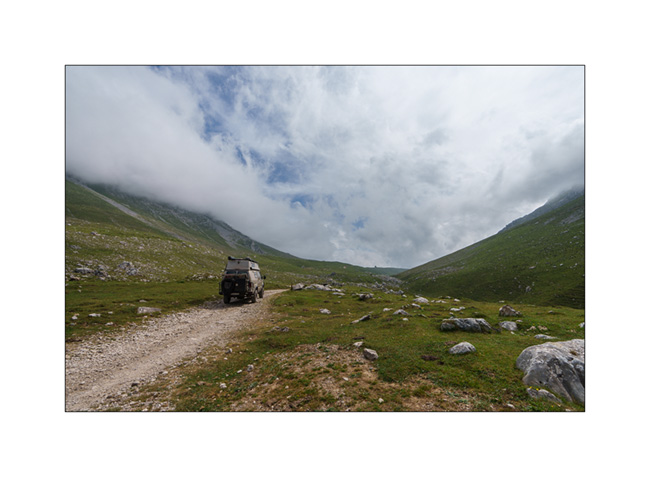
4. At the end of the afternoon, the convection of the day brings us a beautiful thunderstorm, forcing us to turn back.

5. Going down in the rain…

6. After the storm, we go up to discover a viewpoint on the opposite slope.
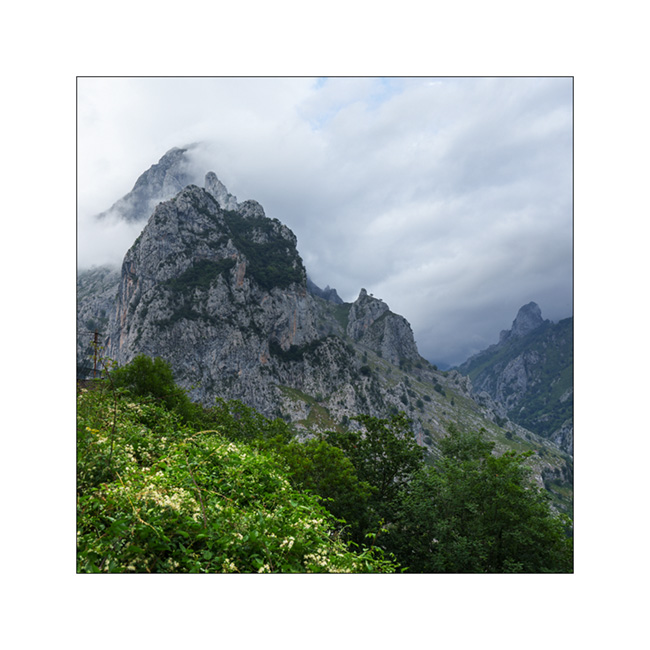
7. Small mountain church.
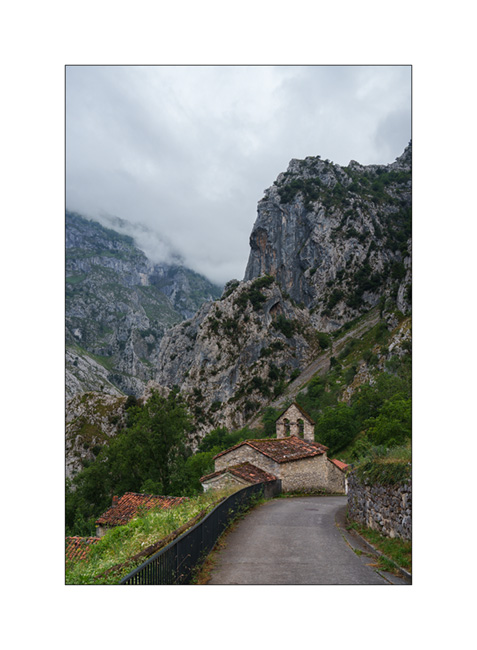
8. Then we head back east. Emile wants to go back to sleep at the surfing spot where we already spent a night.
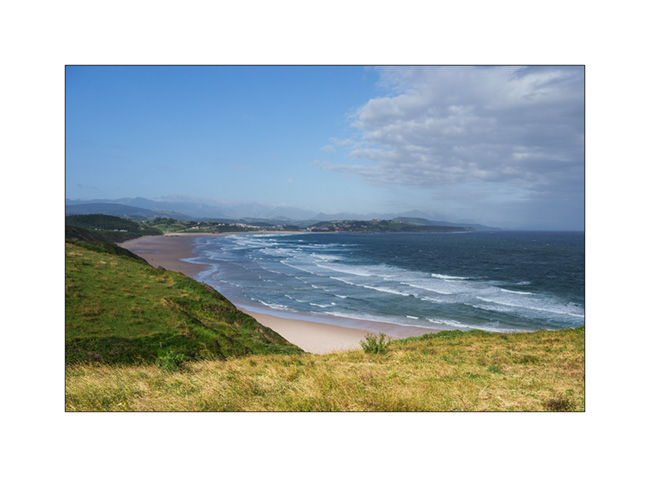
Along the road the next day, we make a quick stop to discover Santillana del Mar which also turns out to be a real tourist trap….
9. Village house.
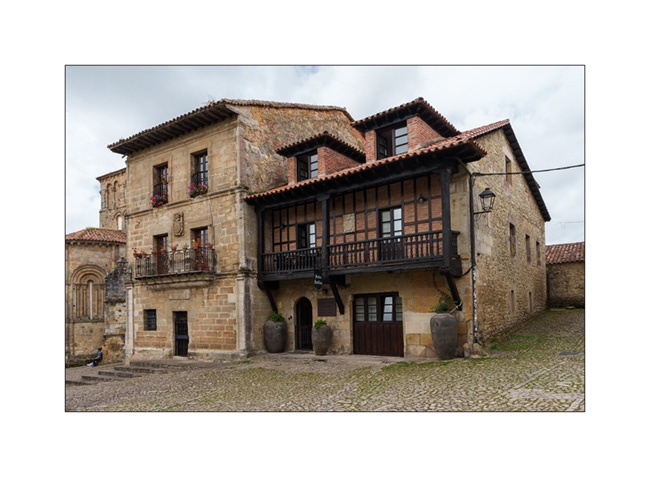
10. Church porch.

11. Entrance to the inner courtyard.
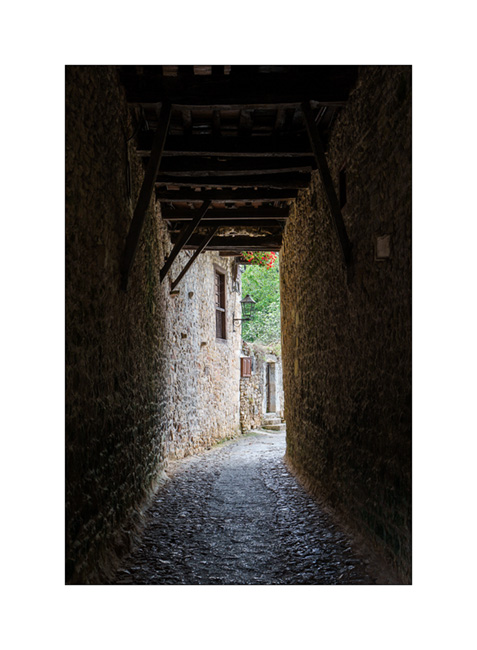
12. Large traditional house.

We continue on the road and reach the Spanish Basque country.
13. Nice bivouac on a ridge…

14. The sky is heavy at the end of this day.

15. A visitor who comes to observe us closely at our camp.

16. Last image of Spain in a pretty Basque village, the next morning, just before crossing the French border.
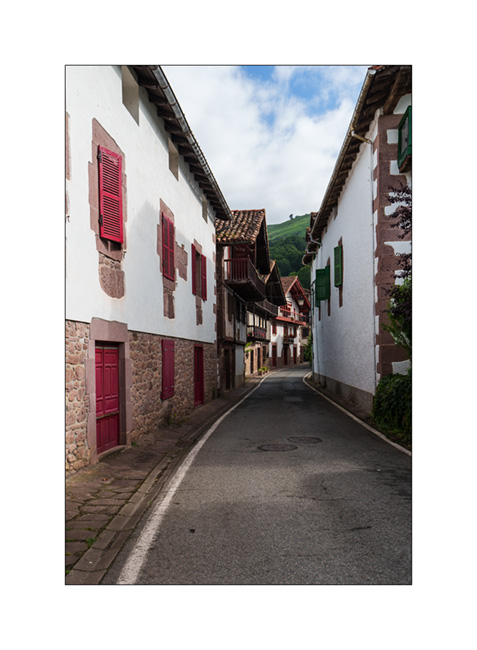
To be continued shortly with the rest of the trip: a stop in Navarrenx and a lovely bivouac with friends, in the foothills of the Pyrenees. 😉
Somiedo National Park and Picos de Europa
After traveling along the coast of Asturias, we head South to discover the Somiedo National Park, in the “valley of lakes”.
1. Houses and granaries typical of this region.

2. After spending a night in a small mountain campground in Valle de Lago, we set off on a lovely hike up the valley, towards the lakes. Along our walk, a beautiful wild iris.
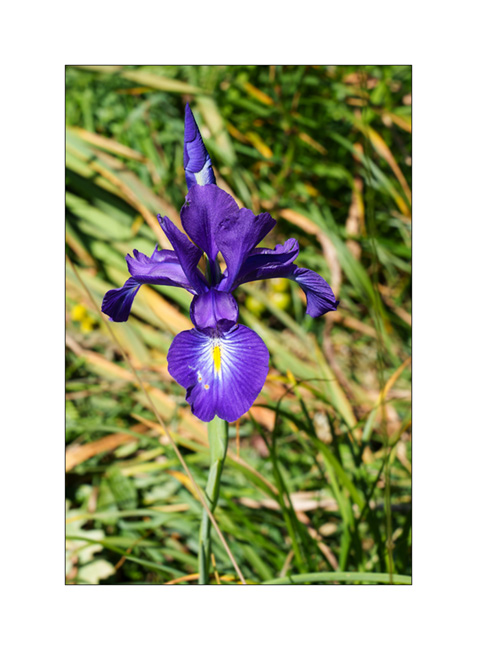
3. Arrival at the lake.
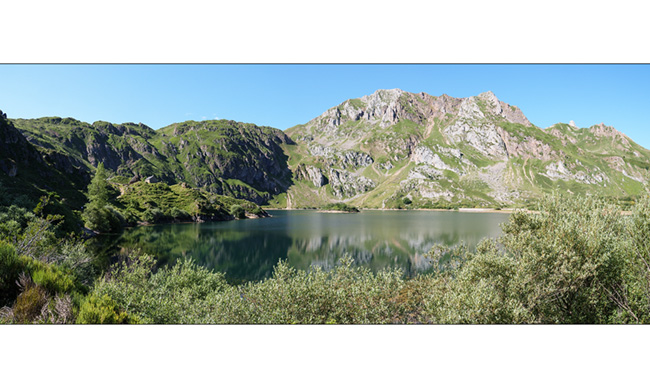
4. Alpine pasture near the lake. We are only at 5,250 feet elevation but already at the tree line.
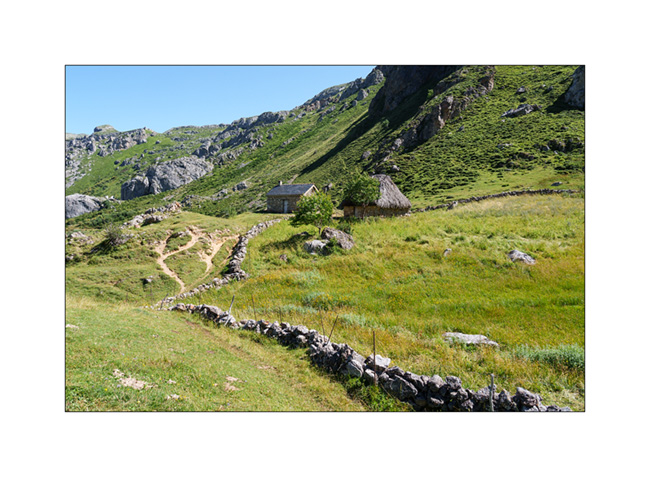
5. Picnic.

6. Lake plants.

7. Along the return hike.

The next day, we hit the road again to go to the lakes of Covadonga. We sleep in a parking lot under the sanctuary. The next morning, we discover that the road leading to the lakes is closed to private vehicles during summer. We park and go to buy tickets for the shuttle; arriving at 8:15 am at the gatehouse, the employee tells me with a large smile: “The next availability is at 4 pm”… It’s a bit of a cold shower! From then on, we give up and go to discover the Sanctuary of Our Lady of Covadonga.
8. Chapel on the cliff, next to the Virgin.

9. Kneeling pilgrims praying in front of the Holy Virgin.
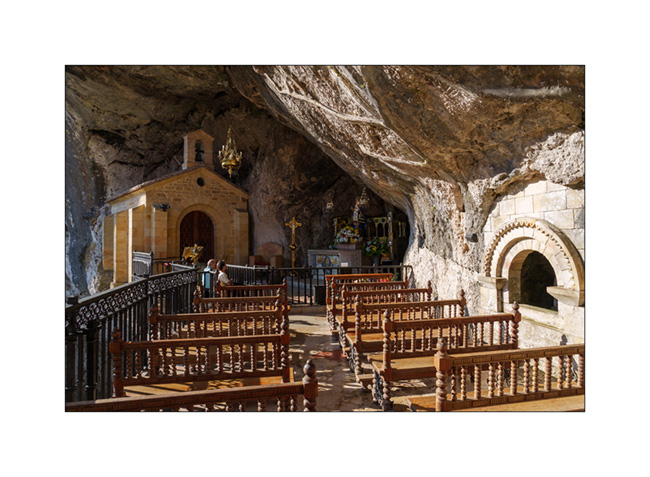
10. The Basilica of Santa Maria la Real de Covalonga.

11. Crypt under the basilica.

After this visit, we decide to go and discover the Picos de Europa, magnificent limestone mountain range set back from the coast a little further east, and more particularly the Gorge of Cáres.
12. Stop on the road at Mirador del Pozo which offers a magnificent view of the mountain range.
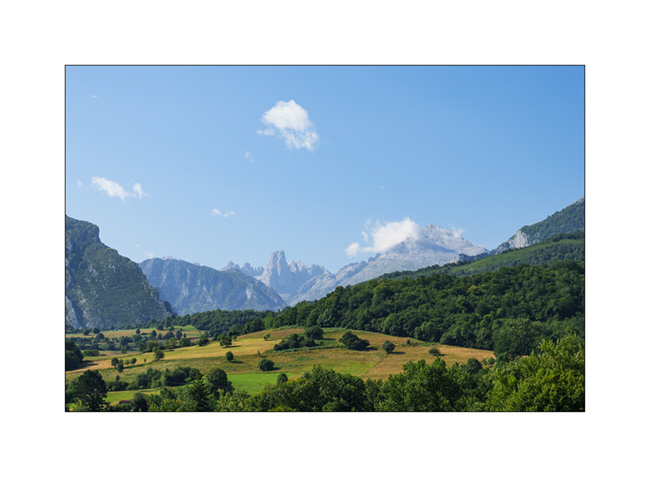
But arriving at the Viesgo crossroads, the road is also blocked because there are too many people. Traveling in the middle of summer is sometimes frustrating!
Emile spots a funicular that goes up to Bulnes, apparently a small mountain village. We go back down the road for 1.5 mile to find a place to park, take the picnic, walk the 45 mintues to the departure station. There is an hour and a half wait but as it’s noon, I buy the tickets and we go to picnic on the banks of the Rio Cáres.
13. Arriving at the top of the funicular, the place turns out to be a real tourist trap! After barely 10 minutes of walking, we arrive in a former summer mountain village which has been completely transformed into a series of crowded tourist restaurants. After only 15 minutes, we have gone around and realize that there is nothing to see there except a small mountain chapel. We can’t even go in as it’s locked.
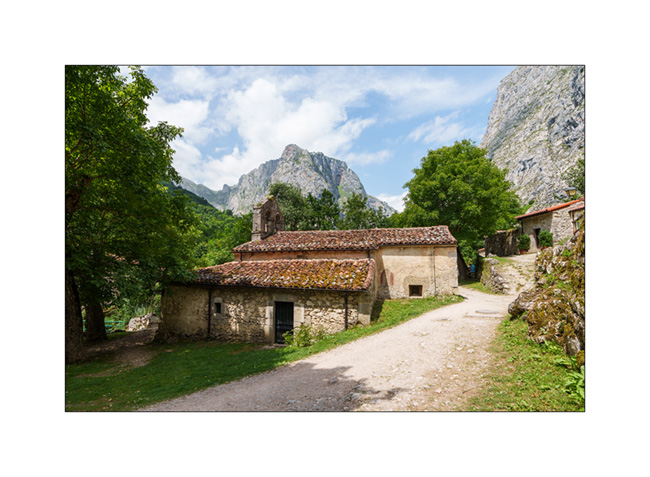
Back at the upper station of the funicular, we have to wait one and a half hour to be allowed to go back down and we reach VivaLaVida after 4pm. I then decide to go up the East fork of the valley, towards Sotres where I have spotted a high-altitude track. You will discover it in the next article! 😉
Incursion into Galicia and return to Asturias
It was one of the spots I wanted to discover for a long time: Praia de Catedrais or “Beach of the Cathedrals”, in Galicia, about ten kilometers from the border with Asturias. A spot that has become extremely touristy since it was published hundreds of times on Instagram, so much that you now have to register on Internet to be allowed to access it via a QR code. As some arches are only accessible at low tide, this further concentrates the crowd at certain times of the day.
First there around 3pm, I gave up as there were so many people. Thus, we discovered it the next day around 8am and if there were still a lot of people, it was probably 5 or 10 times less than the day before.
1. The site consists of a cliff whose bottom is at sea level and “sanded” on a beach.

2. The most famous arches, in a row with each other.
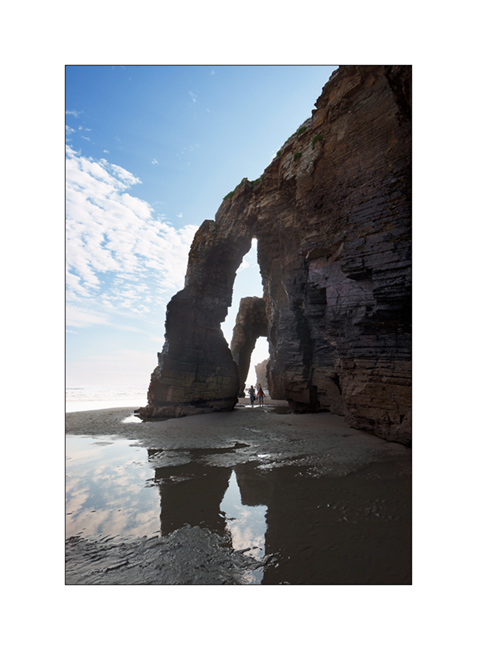
3. What a perspective!
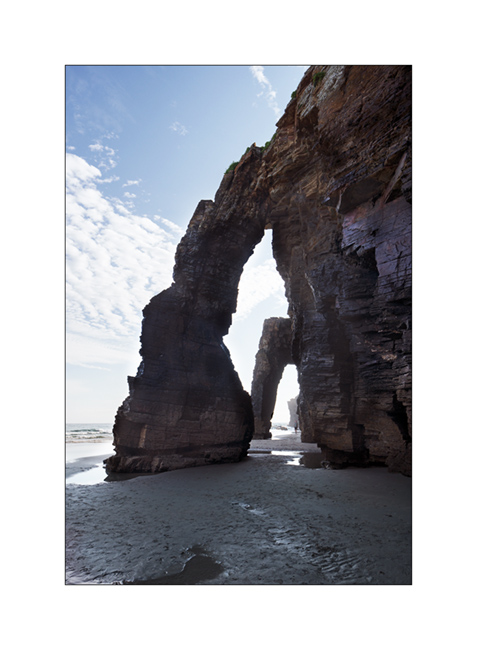
4. Another arch on the way back to the access to the foot of the cliff.

5. Heading back west, we follow the coast on small roads and come across a pretty lighthouse: Faro de Ribadeo.
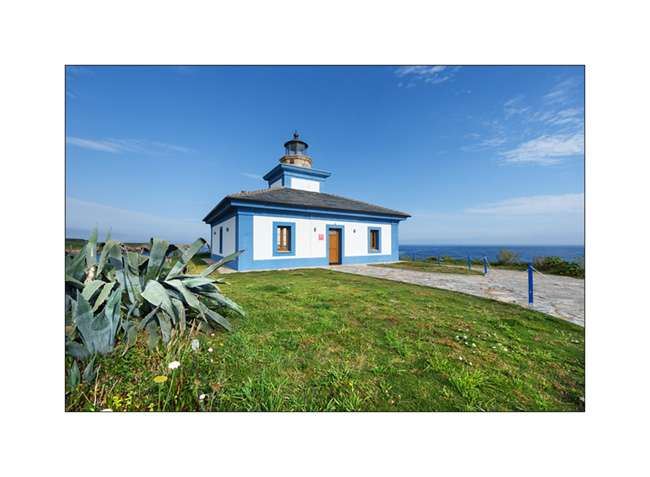
6. A little further East, a pretty wild cove. We discover that it is currently reserved for nudists.

7. New stop a few miles further to discover another natural arch, at the Mirador de Atalaya.

8. We continue to follow the coast, sometimes on trails, discovering pretty coves like this one.
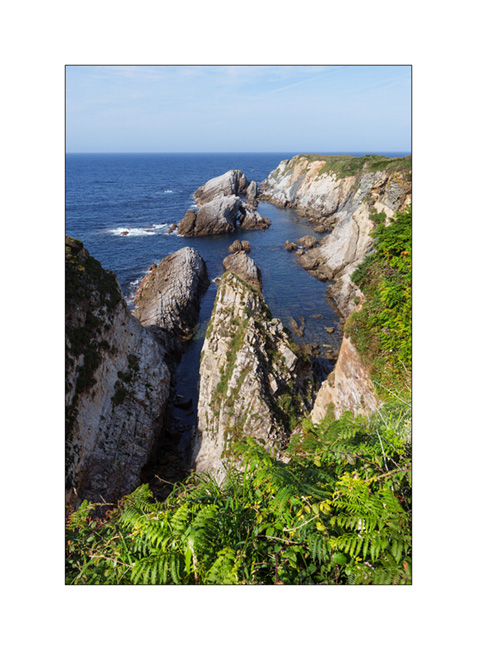
9. Here a pretty little harbor, in Viavelèz.

10. It’s time to look for a place to camp and after three unsuccessful attempts, we find a spot above a beautiful cliff that turns orange at sunset.

11. The next morning, discovery of a pebble beach after a short offroad session on an abandoned path.
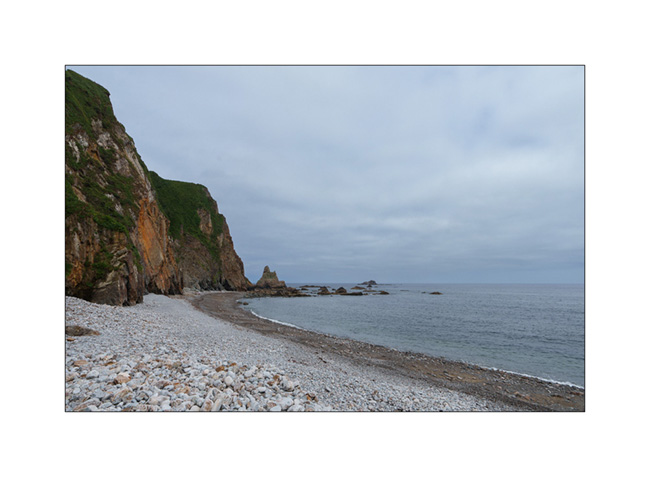
Then we leave the coast to reach the mountains of the Somedio National Park. To be discovered in the next update. 😉
Cantabrian coast and Asturias
So we continue the discovery of the coast now in Cantabria. We had already stopped near Santander last year and we go to discover another spectacular coastal spot very close by.
1. Arrival on site.

2. Laminated rock characteristic of the region.

3. Variant.

4. A few hundred yards further.
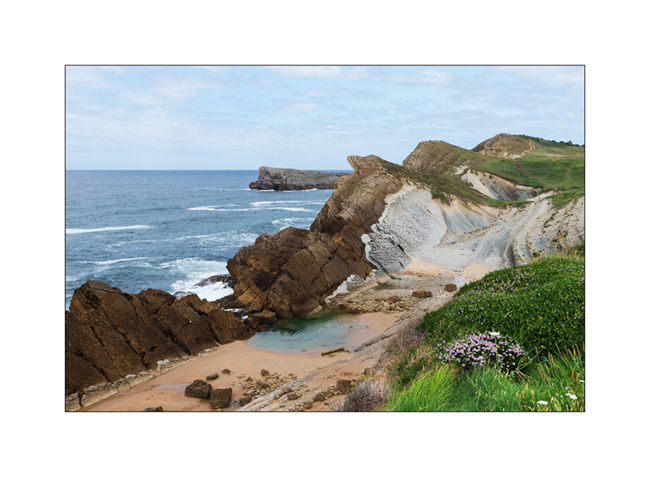
5. Other composition.

6. The tide rises and creeps through the rock wall.

7. Natural pool.

8. Nice late afternoon near San Vicente de Barquera.
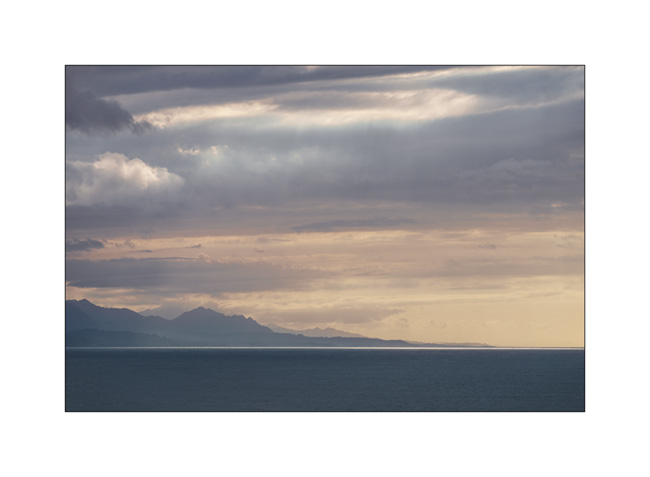
9. Rays…

10. Sunset.

11.
61 / 5 000
The next day, a little further, we discover another spot.
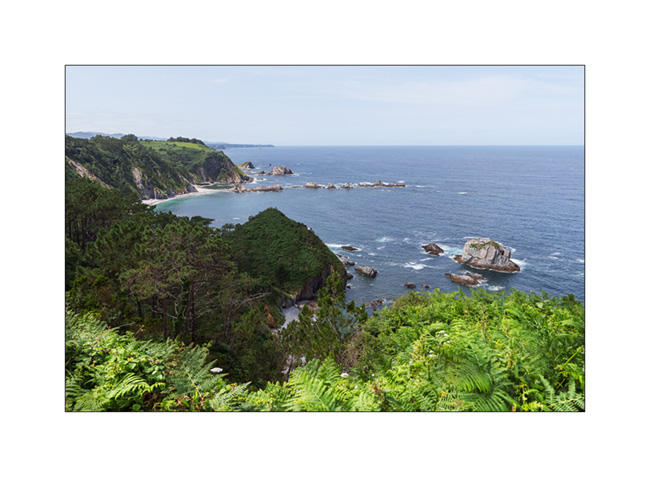
12. The Playa del Silencio.

13. This coastline full of cliffs is truly beautiful.
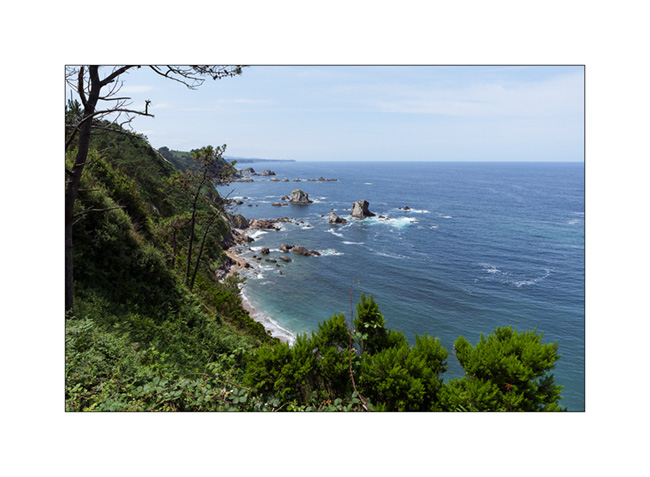
14. We continue to the Asturias-Galicia border to discover a spectacular spot the next day and find a quiet place to sleep by the ocean.

15. Last glimmers of a colorful sunset.

We will show you the Praia de las Catedrais in the next update. 😉
Spanish Basque country
Wanting to discover the Guggenheim Museum building in Bilbao, we drive along the Basque coast.
1. Stop in Ondarroa to discover this pretty little coastal town.
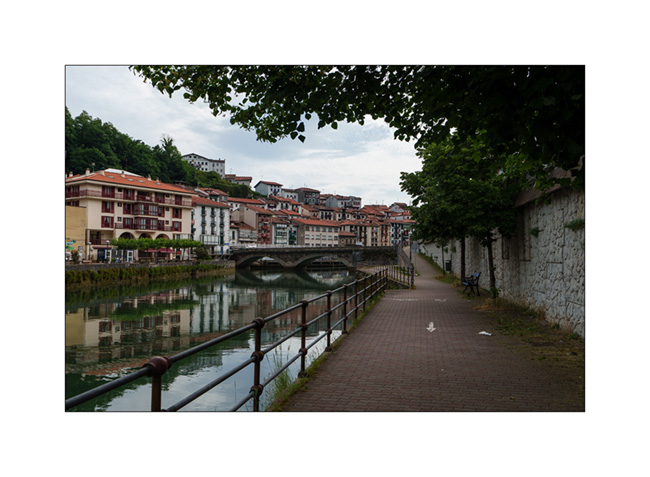
2. Its marina at the mouth of the river.

3. Back street…

4. Intrigued by the noise, we discover a group playing Basque pelota on a concha (field) .
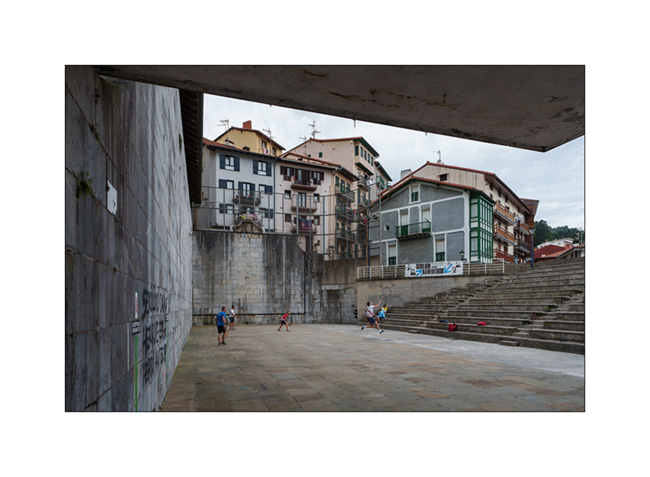
5. Return to VLV via the fish auction, empty this morning…

6. The same auction from the outside. It is built on a quay, right in the city.

After a one-hour stop to repair the VLV headlights that no longer work – one contact of a plug, corroded, broke – we arrive in Bilbao shortly after noon. After parking not without difficulty – it’s not easy to find a space large enough – we eat in VivaLaVida and then go discover the famous building of the Guggenheim Museum.
7. The city of Bilbao combines the old and the new.

8. We discover the Guggenheim from the opposite bank.
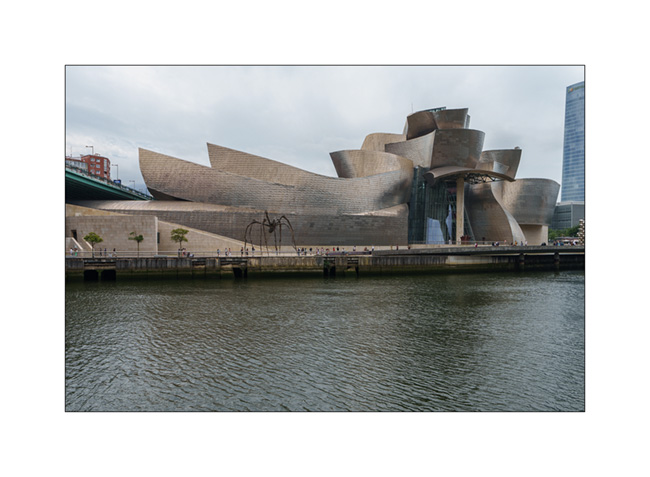
9. What an architecture!
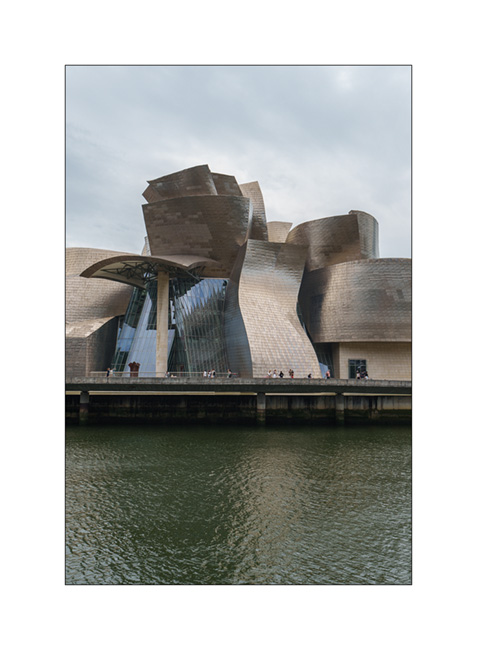
10. Spectacular!

11. Contrast of the sculpture all in curves…
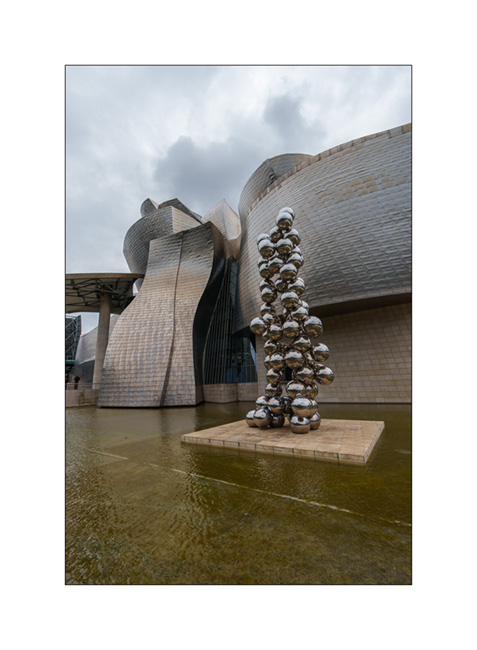
12. Water…

13. Nothing is strait!

14. Curves…

15. Entrance to the museum which we’re not going to, the current exhibition not being suitable for children.
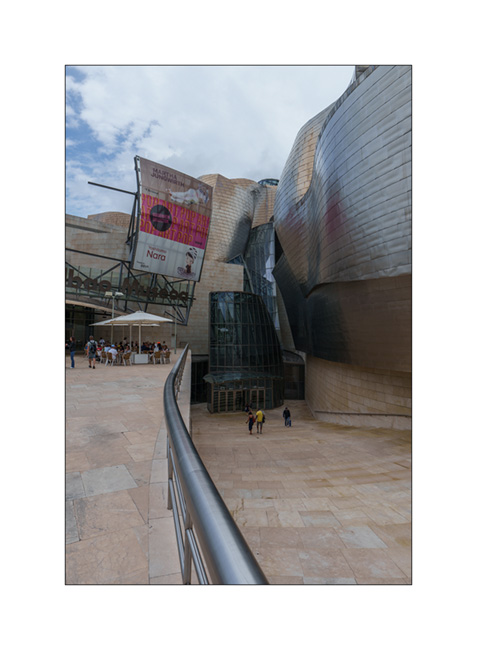
16. Still curves…
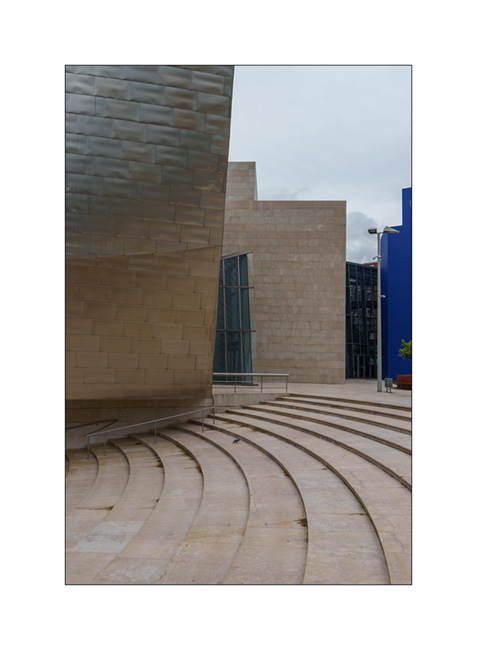
17. The part of the building that houses the administration.

18. Plaza.

19. After searching in vain for a place to sleep by the ocean, we finally find it in the hills back from the coast, right next to a real menhir.
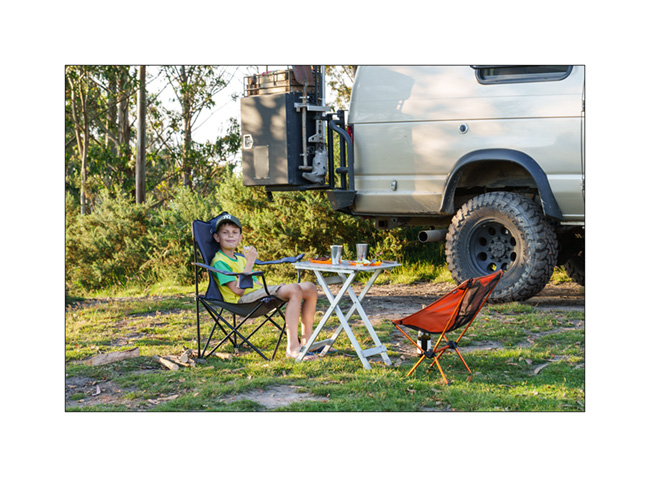
20. It’s Euro soccer final night and Emile doesn’t want to miss it! On my side, I’m enjoying the sunset…
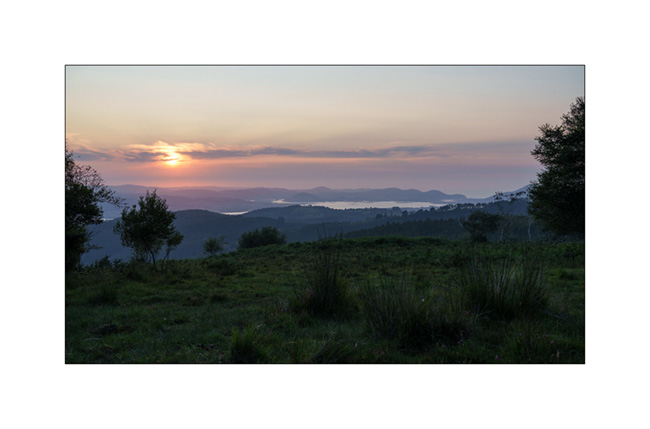
More to come very soon as we continue our progress towards the west.
Way home…
1. Last boondocking with view on the ocean, not far from Bilbao, while it is raining…

2. Starter with local products!
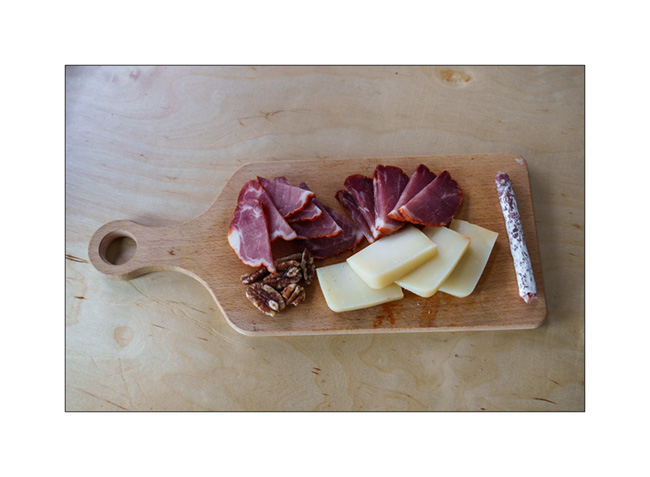
3. Emile’s happy!
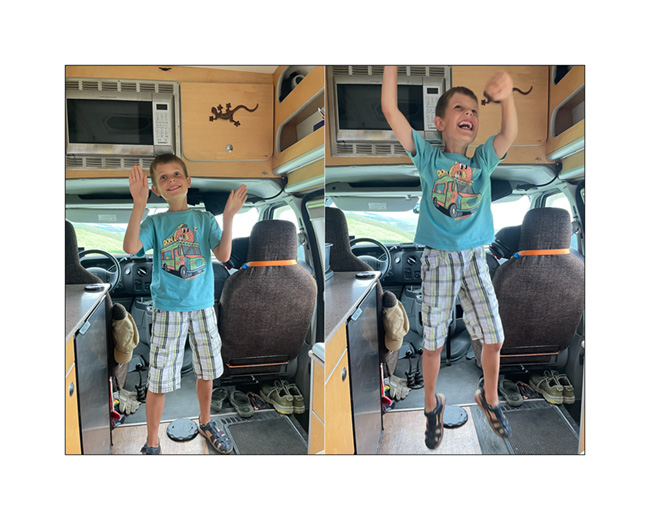
4. Quietness…
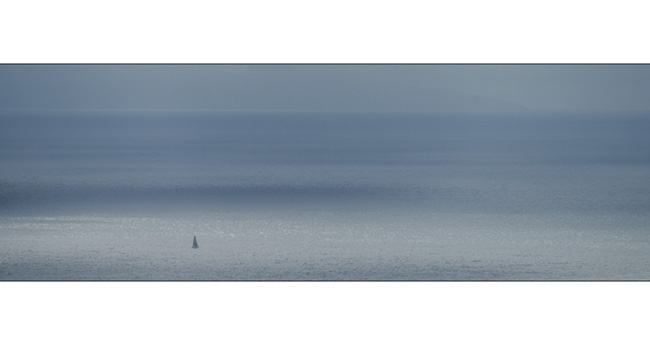
5. The rain stops, giving way to a few colors at sunset.
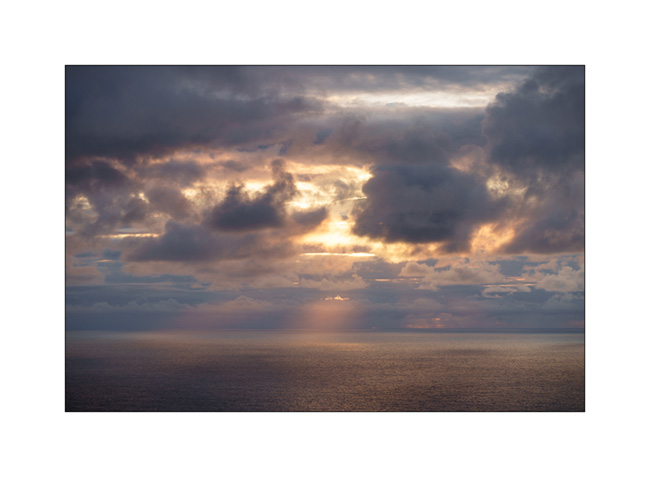
6. …
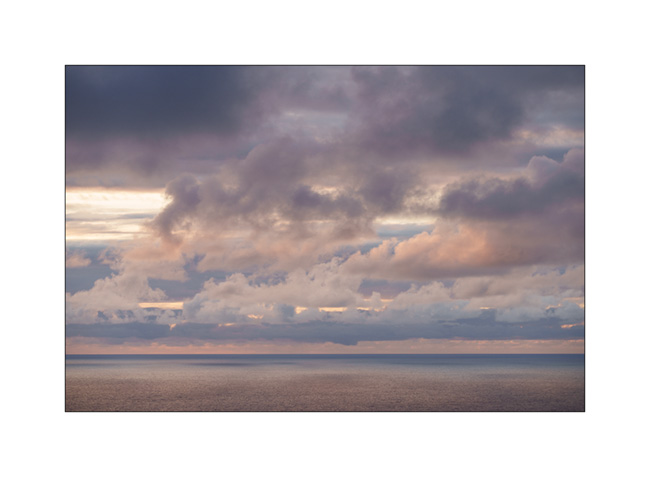
7. …

8. …
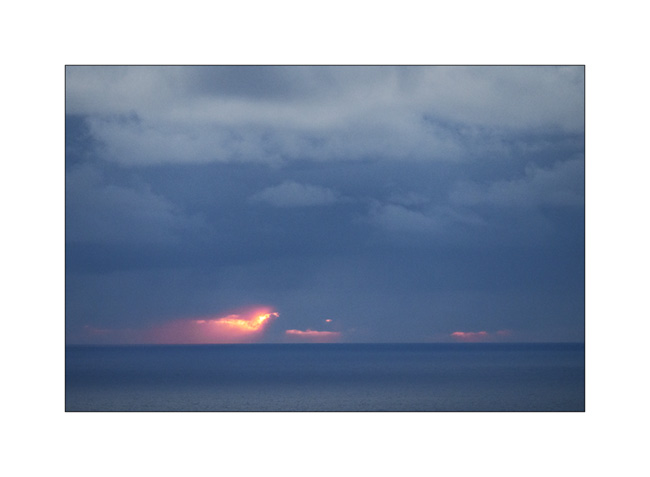
9. … The Basque coast falls asleep..

10. I wanted to discover Canfrang train station for a long time, this curiosity nestled on a pass of the Pyrenees, at an altitude of 3,900 feet elevation. I had seen images when it was disused and I’m surprised to discover that it had been completely renovated and rehabilitated into a luxury hotel!
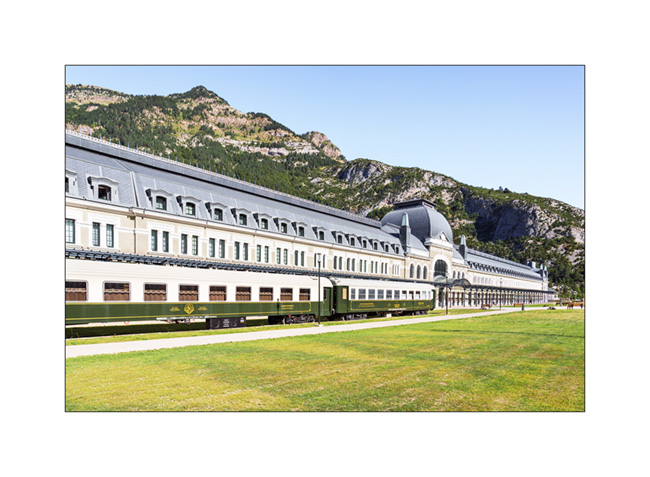
11. Surprising to find such a building in the middle of the mountains, isn’t it?
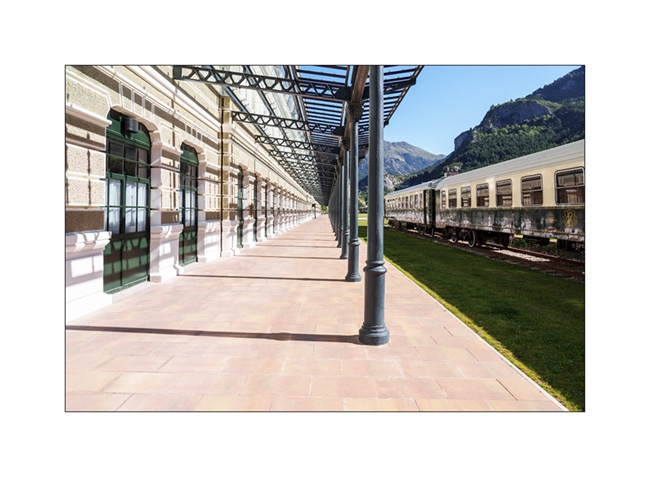
12. We reach Pont d’Espagne where we cannot sleep, the bottom of the valley having been closed to traffic after a huge paid car park in which it’s forbidden to sleep. Here the Cerisey waterfall going down towards Cauterets where we spend the night in a campingpark.
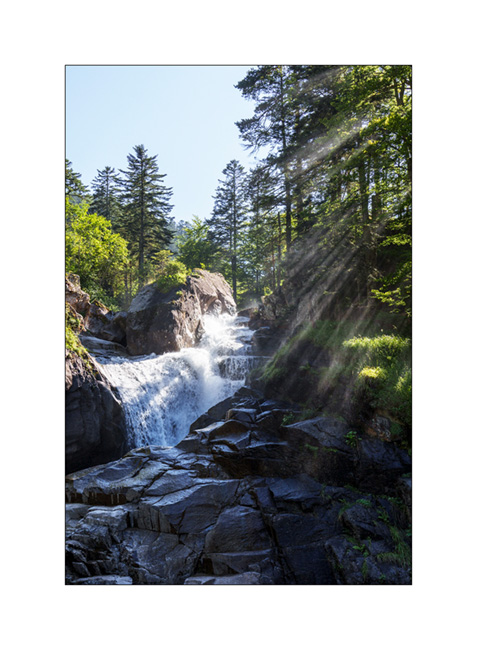
132. We head back towards Switzerland along the northern foot of the Pyrenees and discover a beautiful cave on our route: the Mas d’Azil cave. The cavity was dug by the river which runs through it and it’s so large that the road also crosses it.
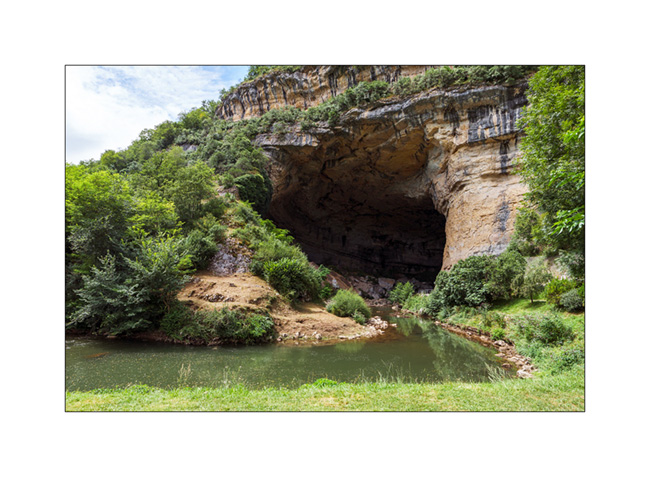
14. We sleep north of Carcassone to discover the ruins of the Four Castles of Lastours.

15. It is the small roads of the Cevennes that bring us back home…
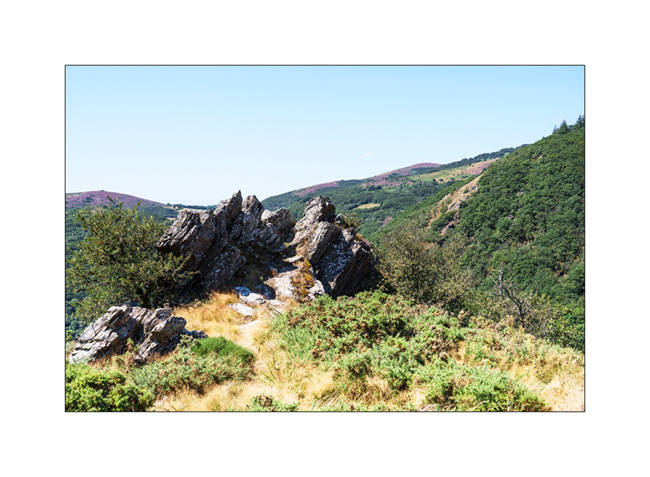
16. Crossing the village of Mourèze…
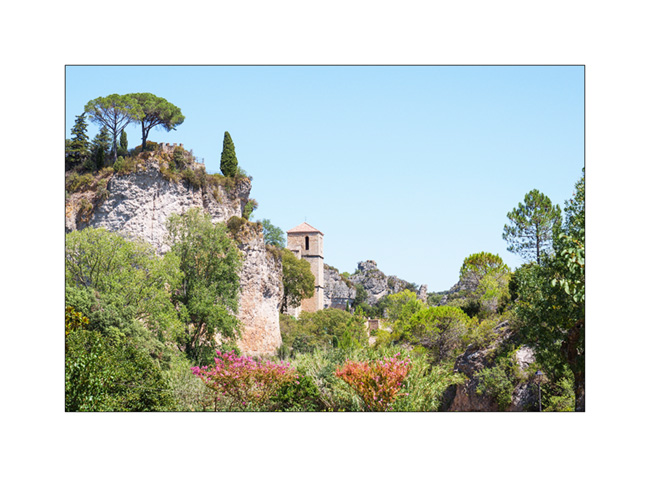
And that’s it for these too short summer vacations where VivaLaVida has covered 2,600 miles.
The next articles will tell you about some fall outings…
Thank you for your loyalty to this little blog! 🙂
Cantabria and Basque Country (continued)
The next morning, we continue to discover this rocky coast.
1. The ocean passes through the limestone crevices to create this small lake about three hundred feet from the coast. The swell makes the water move, a rather unusual effect!
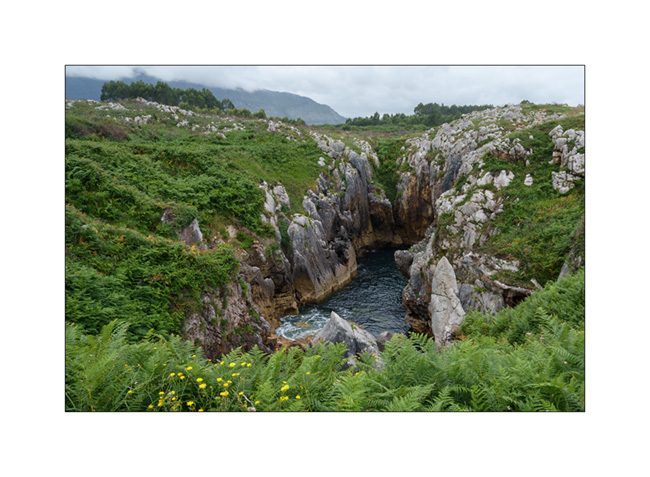
2. Another arch.
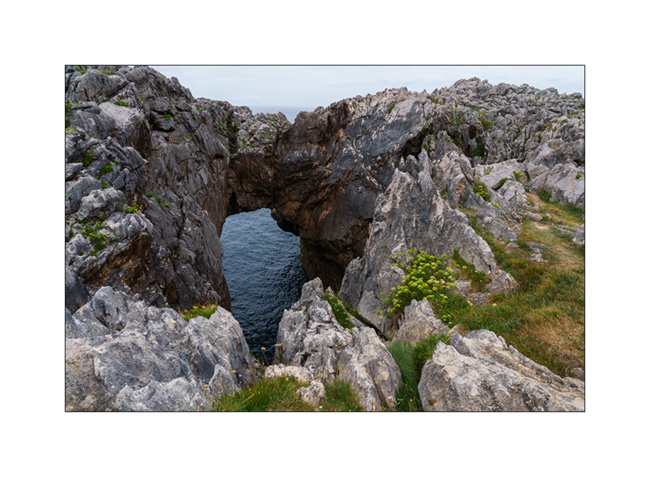
3. The coast towards West from a small peninsula.
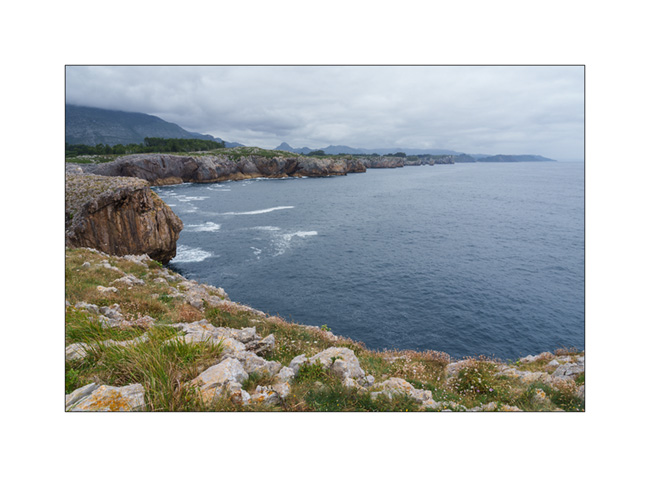
4. And one more arch.
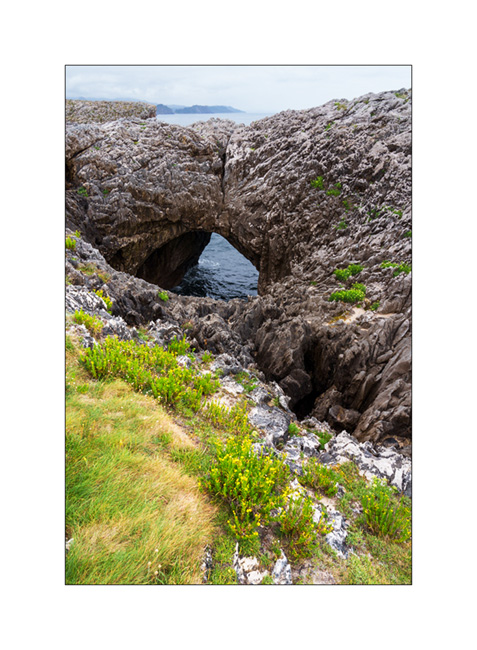
5. There are only a few days left before the end of the vacation, we are heading back east. Abandoned farm along the road…
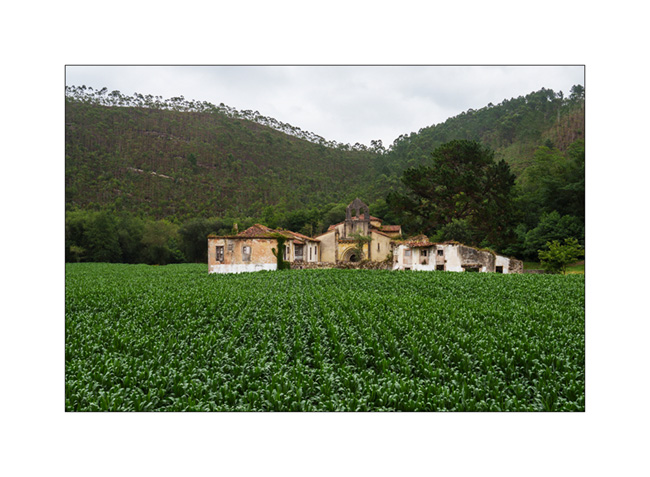
6. Church near the village of Niembru.

7. We sleep on a surf spot near San Vincente de la Barquera, with beautiful colors at sunset.
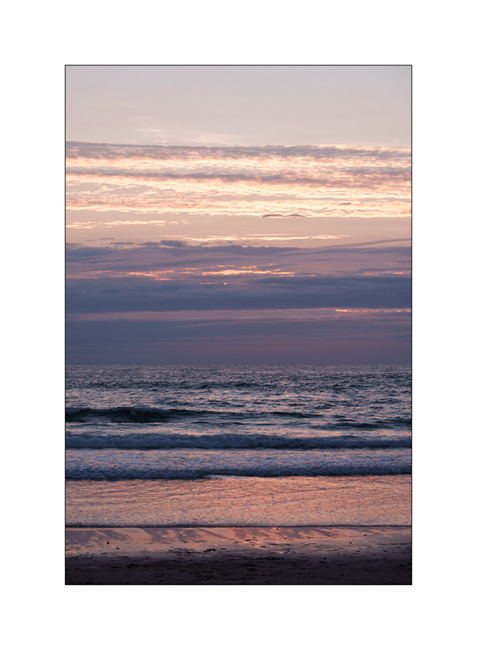
8. …

9. …
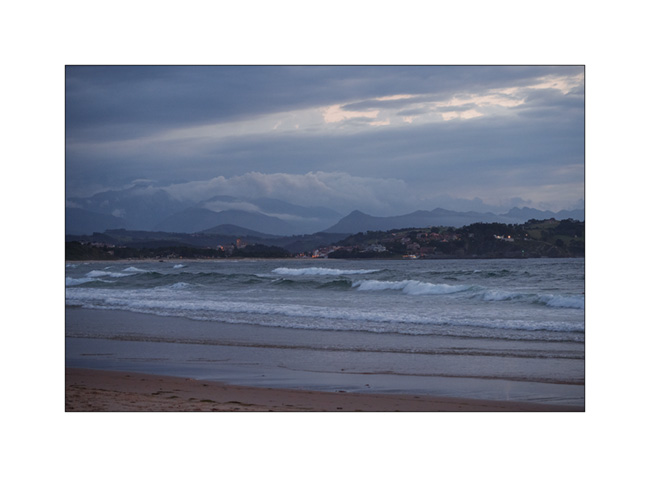
10. VivaLaVida among surfer campers.
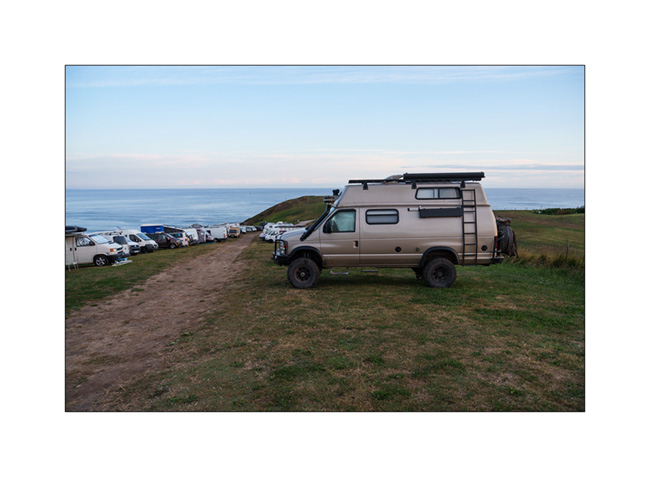
11. First light at dawn…

12. We continue our route in the Basque Country and make a short stop at the Hermitage of San Juan de Gaztelugatxe. It’s so crowded that it’s not possible for us to go down because all tickets for the day have been sold.
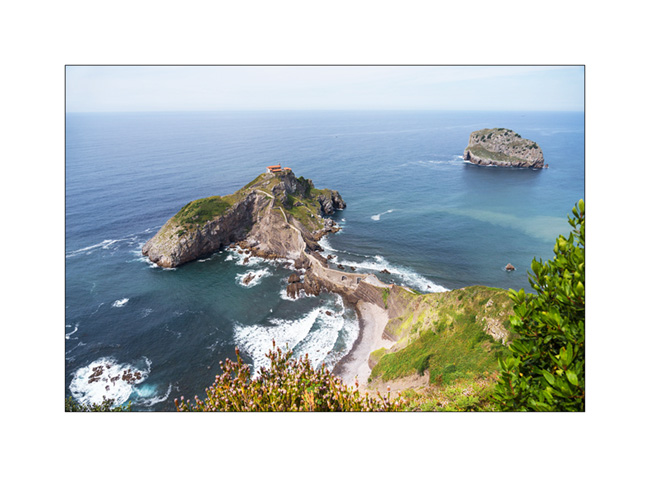
13. Church with covered passageways…

14. Main door.
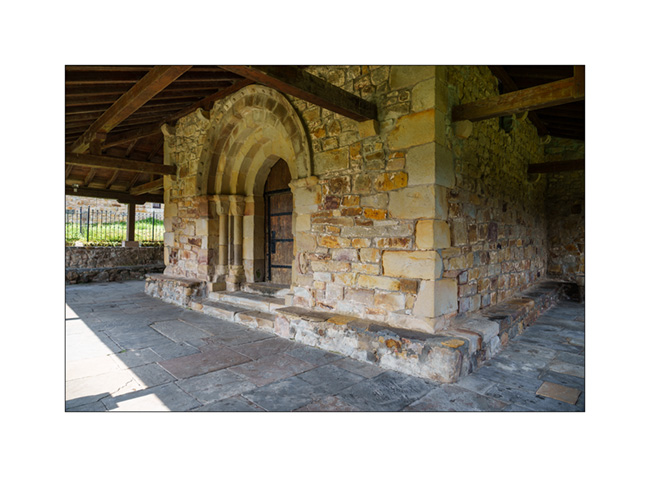
15. Another known spot where we find these layered rocks which have tilted to offer their slices to the ocean, in Zumaia. You don’t see it ont the picture but to my left, there is a beach with probably an average of 1 human per square feet! 😀
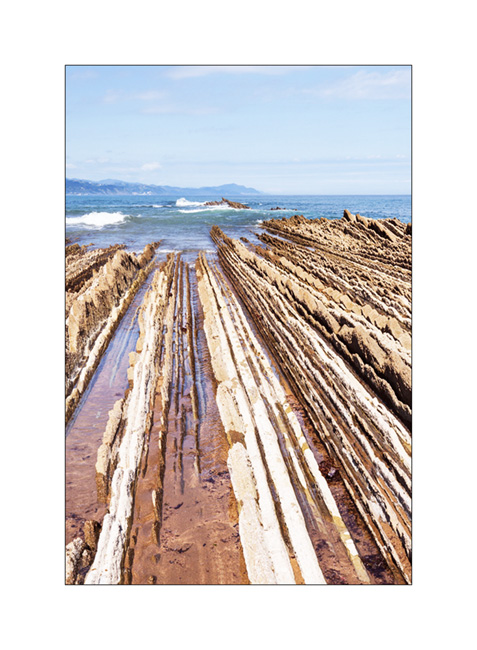
16. My son in discovery mode.
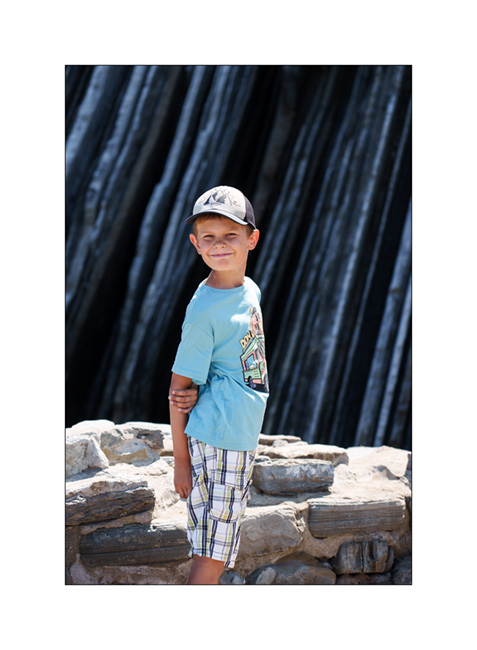
17. Layered cliff…

I will still have one last update to publish in a few days to close the story of this summer trip… See you soon! 😉
Cantabria…
Here is the continuation of our discovery of northern Spain, now in Cantabria.
1. Here we are on the coast of the Atlantic Ocean, in the Golfe de Gascogne where it is blowing strong that day.

2. Walk in the eucalyptus trees.

3. Emile wants to see a lighthouse up close, so we take the coastal path.

4. Ajo lighthouse.

5. We also discover a nearby natural arch.

6. Emile giving the scale.
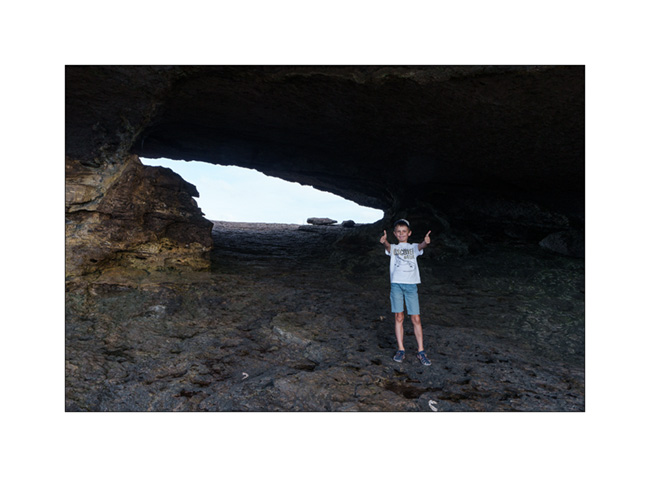
7. Window on the ocean…

8. After sleeping practically over this arch, we discover a very famous spot the next day: Urros de Liencres.

9. Low tide uncovers rock strata…

10. Little alcove…
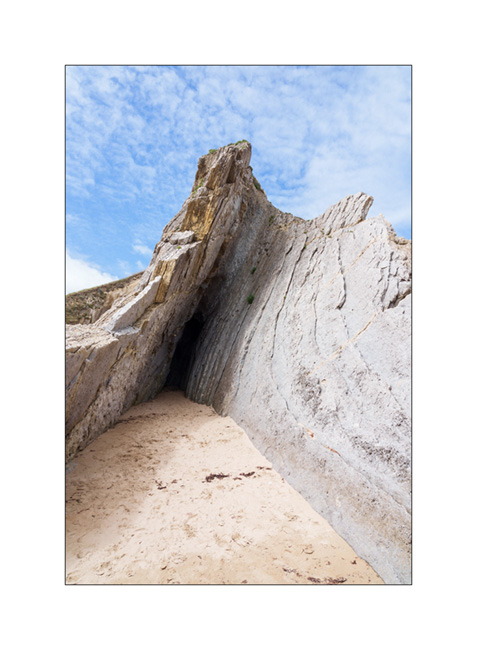
11. Another quick hop to discover another natural arch: El Castro de las Gaviotas. We park towards a pretty chapel.

12. Small cove in the cliff…
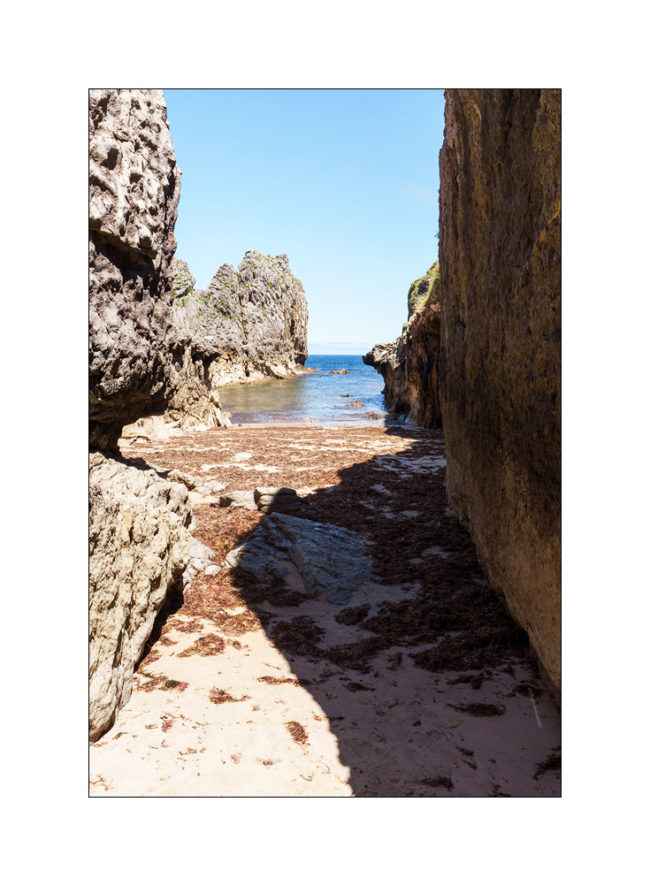
13. The arch still partially hidden.
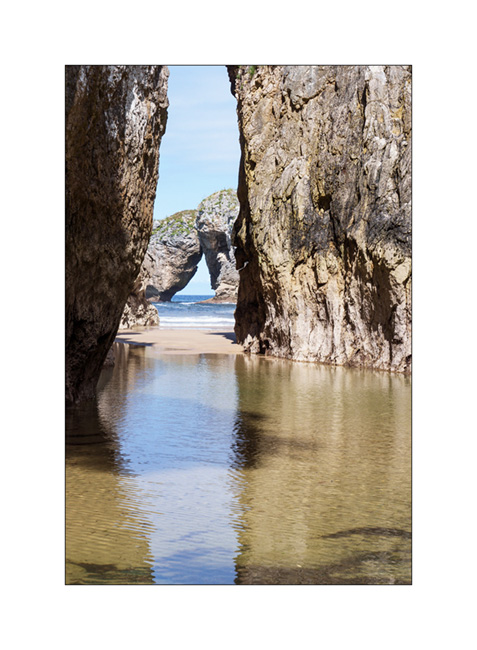
14. And here it is complete.
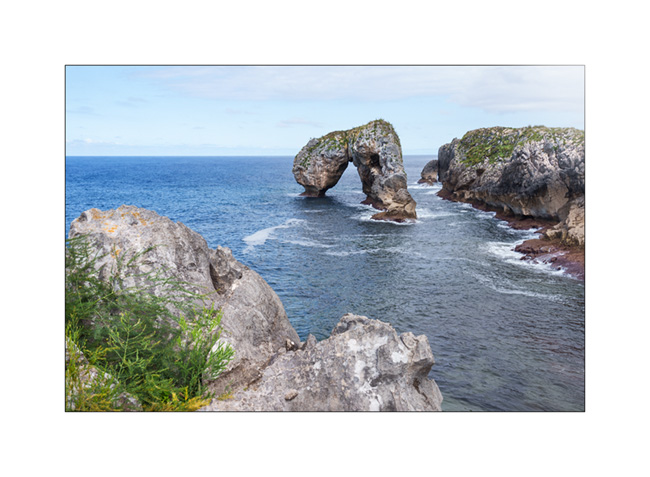
15. After looking for almost two hours for a place to boondock because of the crowds at this time of the year, we finally found a nice place to sleep, at the bottom of the Picos de Europa, near the ocean and accessible only thanks to VivaLaVida’s 4-wheel drive.
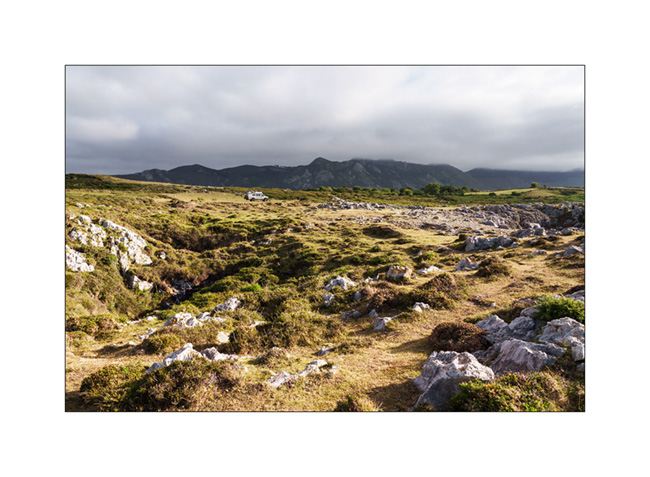
16. The ocean is close.

17. The view behind our camp.

18. Pastel twilight…

To be followed soon!
Navarre and Basque Country…
1. As we continue our progress towards the West…
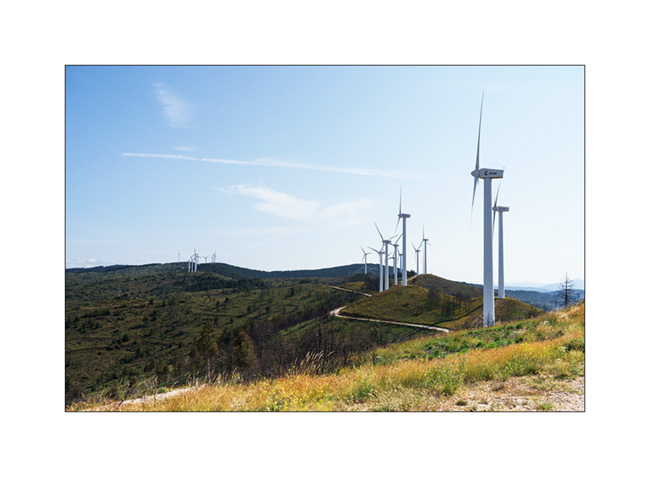
2. … we take a short break in a wind farm.
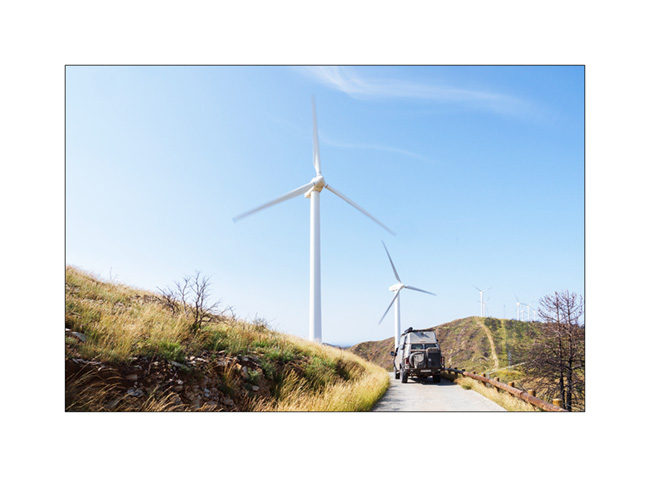
3. Around midday, we reach Urbasa Natural Park, a gorgeous karst plateau between 2,400 and 3,000 feet above sea level.
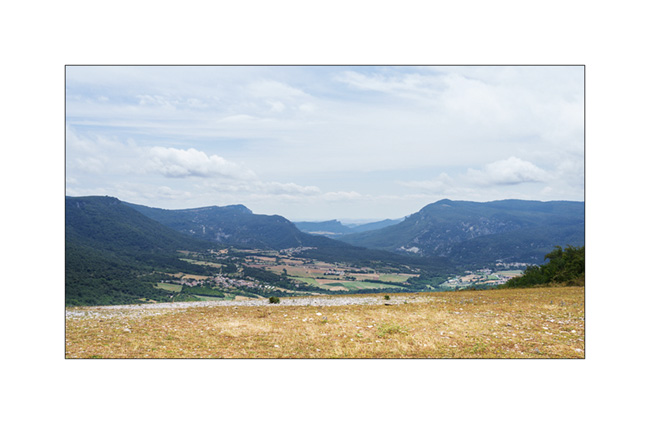
4. After lunch, we go for a walk there.

5. Cliffs…

6. Distorted silhouette…
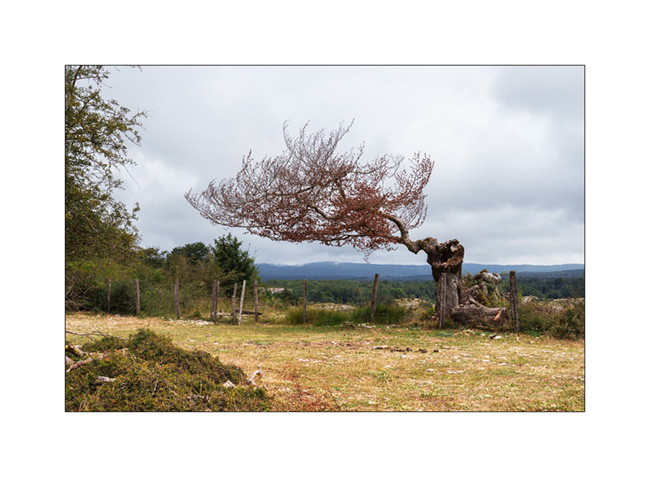
7. Beautiful blue thistles dot these high pastures.

8. Dense forest at the Northwest end of the plateau…

9. …
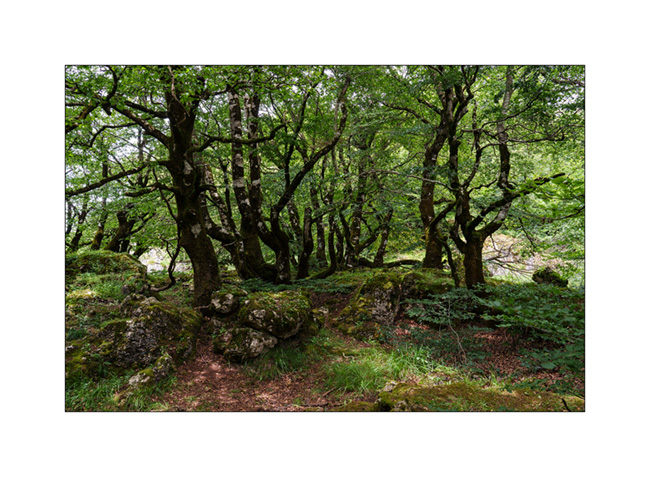
We then head Southeast of Bilbao in search of a natural arch, the Oyo de Aizulo, in the Basque Country.
10. After a walk in a light rain, we arrive at the entrance of this magnificent double arch.
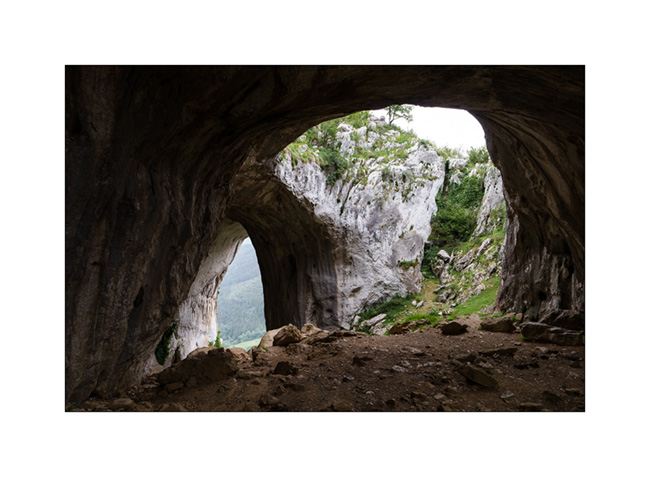
11. Its dimensions are quite impressive! Here the lower arch, probably around ninety feet high.

12. And there the upper arch through which you access the site.

13. The same from above.
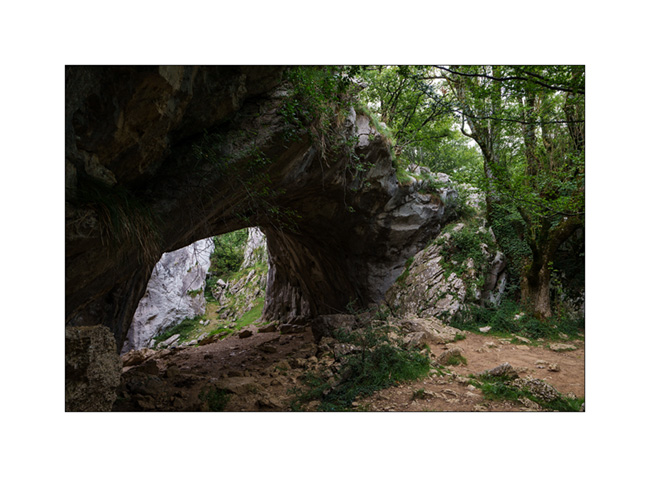
14. Selfie ! 😉
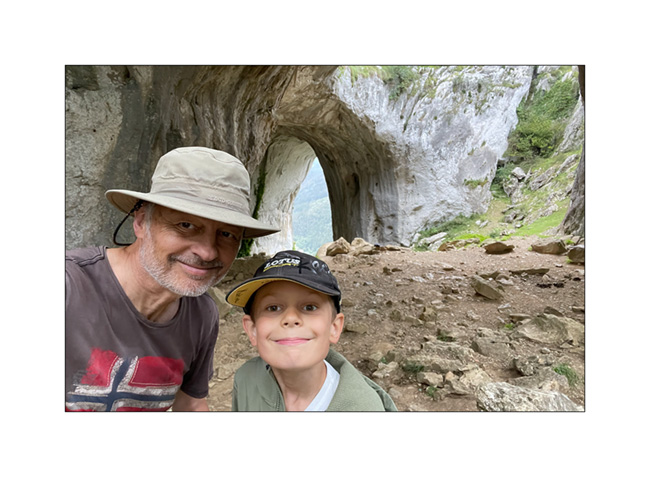
15. The next day, after the rain stopped, we go discover an impressive waterfall, the Salto del Nervion which, with its 666 feet, is the highest waterfall in the entire Iberian Peninsula.
As a gate now prohibits access to the trail, it’s after an approx. 2 hours hike that we reach the site to discover a completely dry waterfall! Too bad, it must be quite impressive when the Nervion flows there.

The next post will be more “oceanic” with the arrival of VivaLaVida in the Bay of Biscay… 😉
Loarre Castle
1. We stop to discover the superb castle of Loarre.
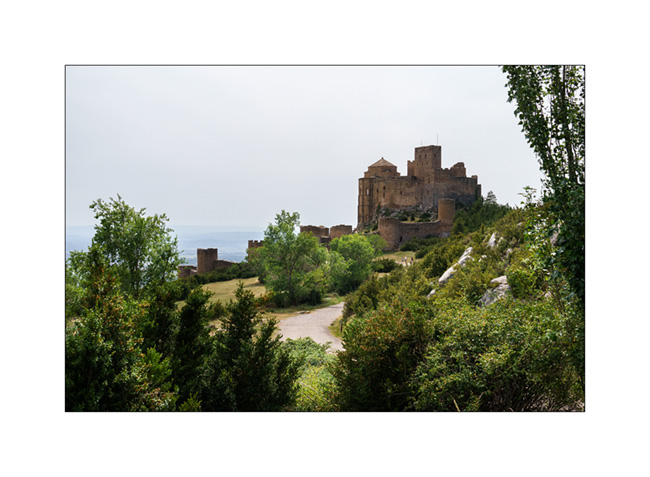
2. Its fortified walls are still almost intact.
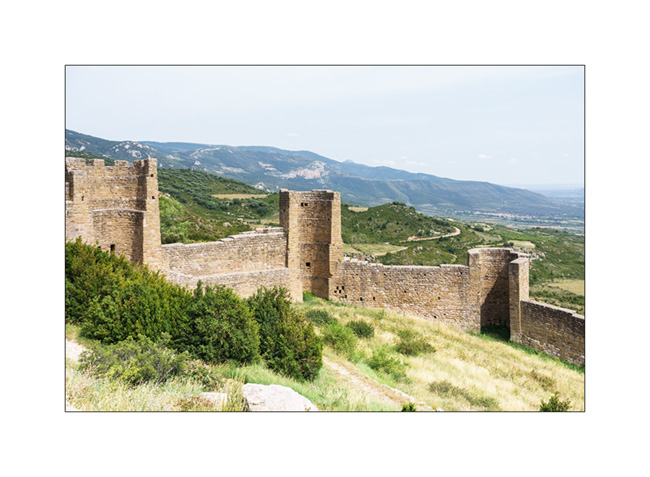
3. The main porch…
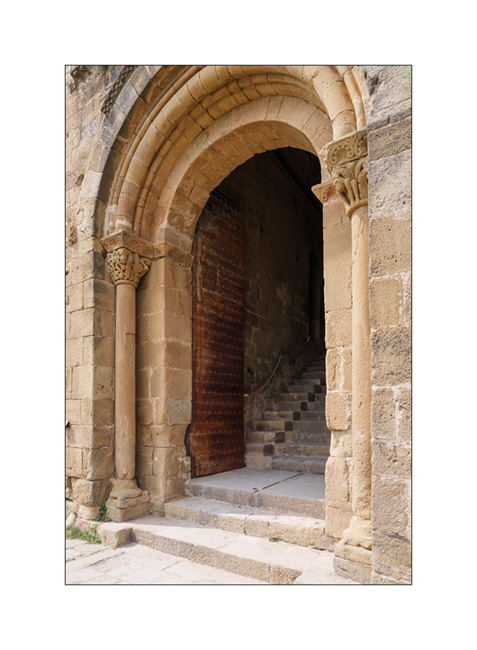
4. …and the staircase which leads to the different courtyards and interior buildings.

5. Gallery…
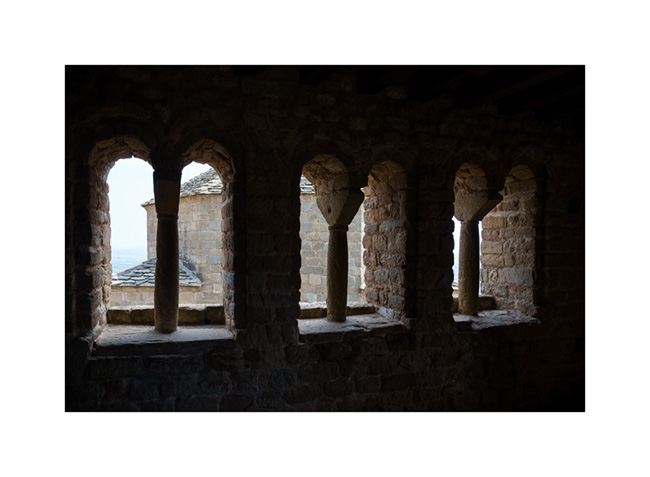
6. View on the plain.
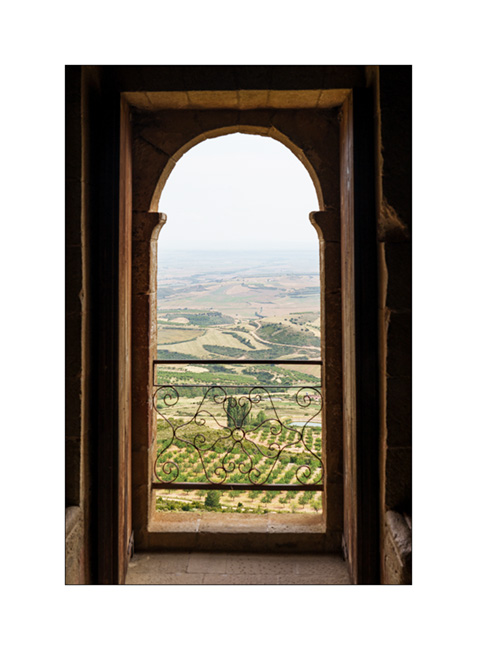
7. Marble stained window…

8. Glow…
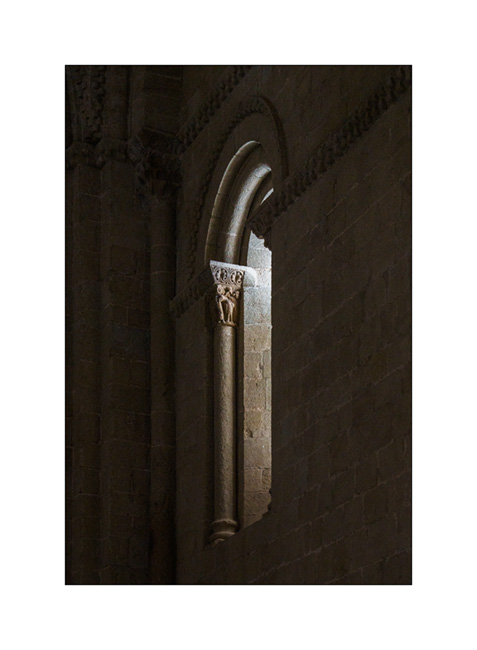
9. Nave…
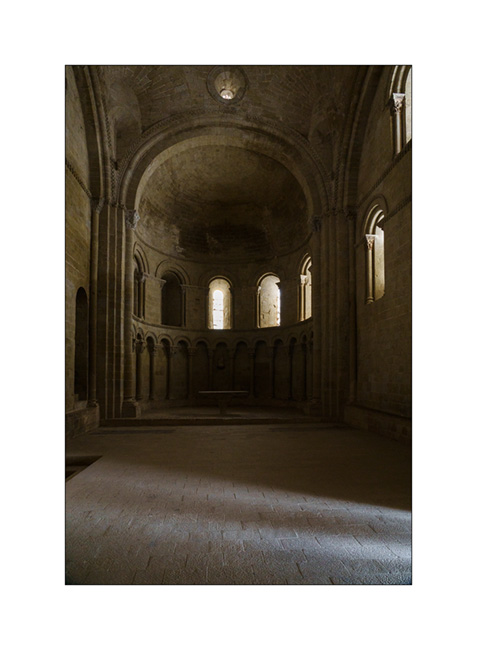
10. Within the walls.
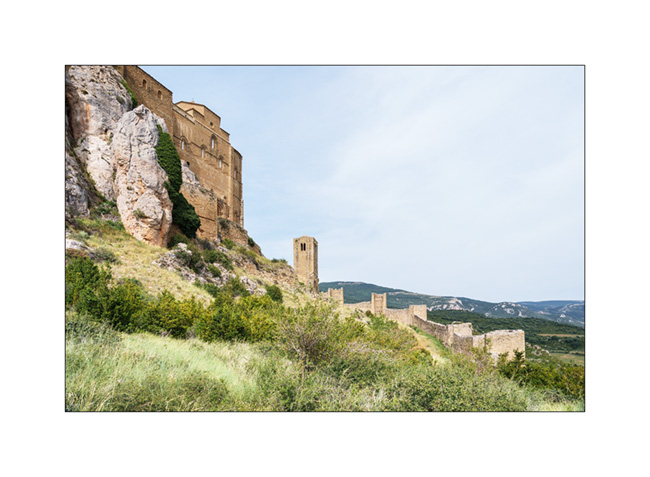
11. Last look as we leave to find a boondocking place.

12. Nice trail in the pine forest…
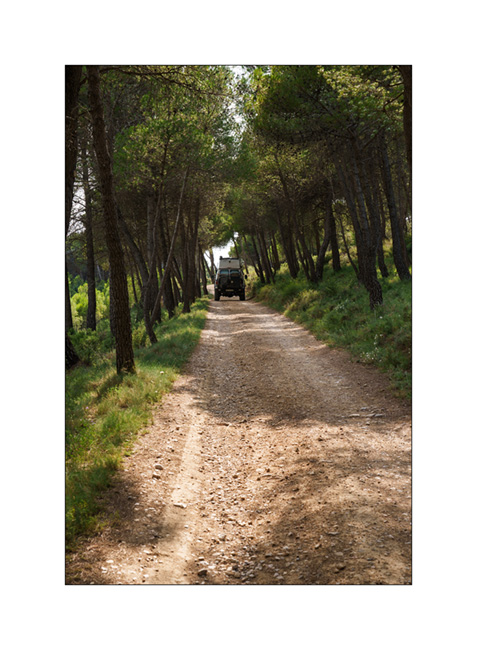
13. Quiet place under the pines. The shower will be great after a new hot day.

Discovery of the Mallos de Riglos and other curiosities in the next update. 😉

 D5 Creation
D5 Creation